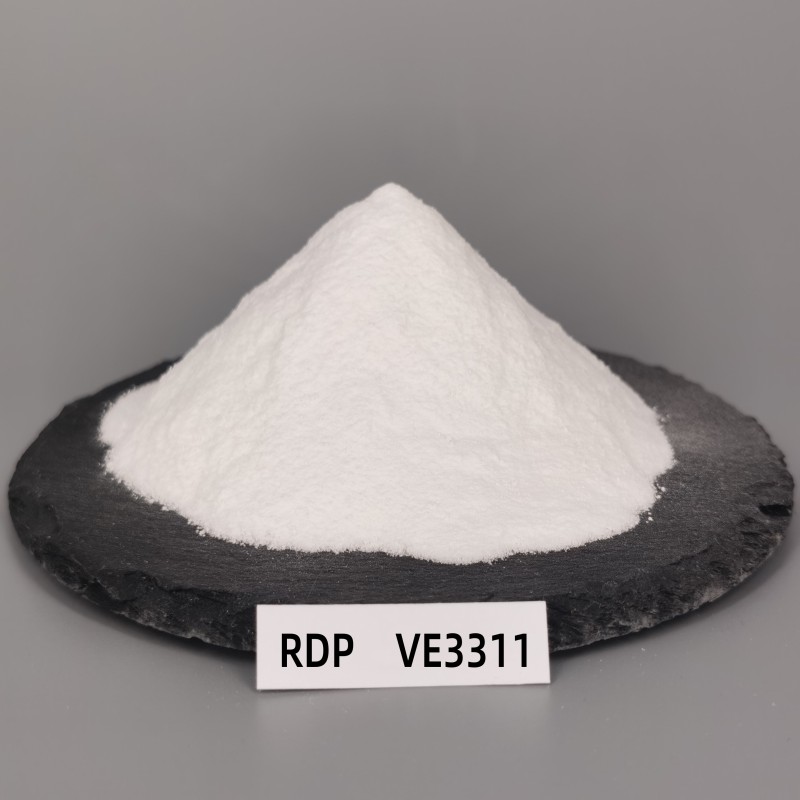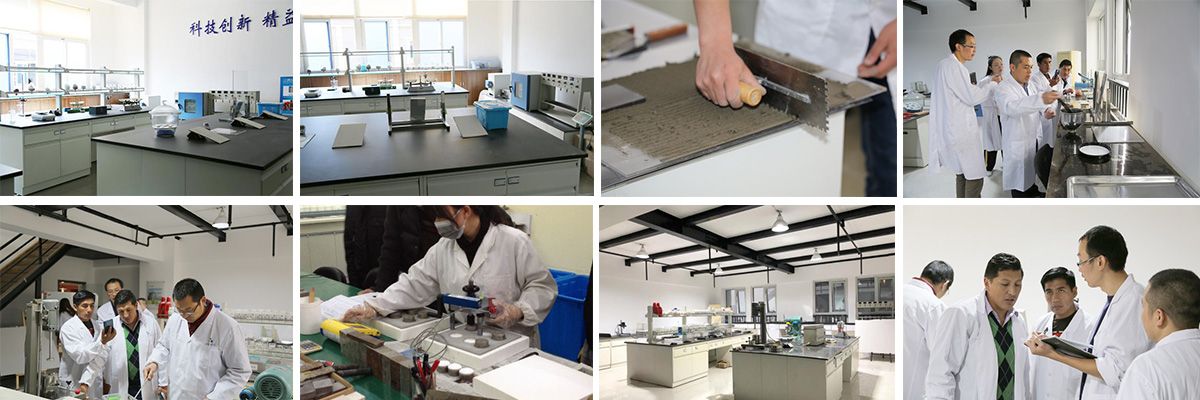Redispersible latex powder is a modified lotion powder obtained by spray drying of a binary or ternary copolymer of vinylacetase and ethylene tert carbonate VoVa or alkene or acrylic acid. It has good redispersibility, and is redispersible into lotion when it contacts with water, and its chemical properties are identical to the original lotion.

The research on redispersible latex powder began in 1934 with I.G. Farbenindus AC in Germany's polyvinylidene acid redispersible latex powder.
And Japanese powder latex. After World War II, there was a severe shortage of labor and construction resources, forcing Europe, especially Germany, to use various powder building materials to improve construction efficiency. In the late 1950s, Germany's Hearst Company and Wacker Chemical Company began industrial production of redispersible latex powder. At that time, the redispersible latex powder was mainly of the polyvinyl acetate type, mainly used for woodworking adhesive, wall primer, and cement wall materials. However, due to the limitations of PVAc adhesive powder's high minimum film forming temperature, poor water resistance, and poor alkali resistance, its use is greatly limited.
With the successful industrialization of VAE lotion and VA/VeoVa lotion, redispersible emulsion powder with a minimum film forming temperature of 0C, good water resistance and alkali resistance was developed in the 1960s. After that, its application was widely promoted in Europe, and its application scope gradually expanded to various structural and non structural building adhesives, dry mixed mortar modification, wall insulation and finishing systems, wall screed and sealing plaster The field of powder coatings and building putty.
Domestic production of redispersible latex powder In recent years, the demand for redispersible latex powder in Europe and North America has grown slowly. On the contrary, with the gradual implementation of China's building energy conservation policy and the vigorous promotion of dry mixed mortar for buildings, the use of redispersible latex powder in Chinese Mainland has increased rapidly. Foreign multinational companies and some domestic enterprises have also launched projects of redispersible latex powder across the country. According to relevant experts' statistics, in 2003, the global production of redispersible latex powder was 190000 tons, mainly used in Europe and North America. The consumption in the Chinese market was less than 5000 tons. However, in 2007, the market consumption of redispersible latex powder in China had reached 450000 tons, with the main suppliers being Dalian Chemical, Wacker from Germany, and National Starch from the United States. It is predicted that by 2010, the demand for redispersible latex powder in China will reach 100000 tons.
Types of redispersible latex powder:
The main types of redispersible latex powder currently used in the market are:
Vinyl acetate and ethylene copolymer powder (Vac/E), ethylene and vinyl chloride, and montmorillonite ethylene ternary copolymer powder (E/Vc/VL), vinyl acetate and ethylene and higher fatty acid ethylene ternary copolymer powder (Vac/E/VeoVa), vinyl acetate and higher fatty acid ethylene copolymer powder (Vac/VeoVa), acrylic acid and ethylene copolymer powder (A/S), vinyl acetate and acrylic acid, and higher fatty acid ethylene copolymer powder (Vac/A/VeoVa) Cool acid ethylene cool homopolymer rubber powder (PVac), styrene butadiene copolymer rubber powder (SBR), etc.
Composition of redispersible latex powder:
*Redispersible latex powder is usually white powder, but there are also a few other colors available. Its components include: * Polymer resin: located at the core of the rubber powder particles, it is also the main component that can be used to disperse the latex powder
*Additive (internal): Used together with the resin to modify the resin.
*Additives (external): In order to further expand the performance of redispersible latex powder, additional materials are added.
Protective colloid:
A layer of hydrophilic material wrapped on the surface of redispersible latex powder particles, most of which can be redispersible
The protective colloid of dispersed latex powder is polyvinyl alcohol.
Anti caking agent: Fine mineral filler mainly used to prevent caking of rubber powder during storage and transportation, and to facilitate the flow of rubber powder (dumping from paper bags or tank cars)
The role of RDP:
*The redispersible latex powder forms a film after dispersion and serves as the second adhesive to enhance its strength;
*The protective colloid is absorbed by the mortar system (it will not be damaged by water after film formation, or "secondary dispersion":
*The film-forming polymer resin is distributed as a reinforcing material throughout the entire mortar system, thereby increasing the cohesion of the mortar:
Product performance:
Redispersible latex powder is made from polymer lotion by spray drying. After mixing with the water in mortar, it is emulsified and dispersed in water to form a stable polymer lotion again. After the redispersible latex powder is emulsified and dispersed in water, the water evaporates, forming a polymer film in the mortar to improve the performance of mortar. Different redispersible latex powder has different effects on dry powder mortar. By improving the impact resistance, durability, and wear resistance of mortar, the adhesive powder particles fill the pores of the mortar, increasing its compactness and improving its wear resistance. Under the action of external forces, it will produce relaxation without being damaged. Polymer adhesive films can permanently exist in mortar systems. Improving the workability of mortar construction.
There is a lubricating effect between the particles of polymer adhesive powder, allowing the mortar components to flow independently, while the adhesive powder has an inducing effect on air, provide compressibility of mortar and improve its workability during construction. Improving the bonding strength and cohesion of mortar.
After being filmed with redispersible latex powder as an organic binder, it can form high tensile strength and adhesive strength on different substrates. It plays an important role in the adhesion between mortar and organic materials (EPS, extruded foam board) and smooth surface substrate. The film-forming polymer adhesive powder is distributed as a reinforcing material throughout the entire mortar system, increasing the cohesion of the mortar. To improve the weather resistance, freeze-thaw resistance, and prevent mortar cracking, redispersible latex powder belongs to thermoplastic resin, which has good flexibility and can make the mortar adapt to external cold and hot environment changes, effectively preventing mortar cracking due to temperature differences. By improving the hydrophobicity of mortar and reducing water absorption, latex powder can be re dispersed to form a film on the pore and surface of the mortar. The polymer adhesive film will not be re dispersed after encountering water, preventing the invasion of water and improving its impermeability. Special redispersible latex powder with hydrophobic effect has better hydrophobic effect. Improving the bending strength and flexural strength of mortar.
Product application:
External wall insulation system:
Bonding mortar: Ensure that the mortar firmly adheres the wall to the EPS board. Improve bonding strength.
Plastering mortar: Ensure the mechanical strength, crack resistance, durability, and impact resistance of the insulation system.
Joint filler: The impermeability of mortar to prevent water intrusion. At the same time, it has good adhesion with the edges of ceramic tiles, low shrinkage rate, and flexibility.
Tile renovation and wooden board plastering putty: Improve the adhesion and bonding strength of the putty on special substrates (such as ceramic tiles, mosaics, plywood, and other smooth surfaces), ensuring that the putty has good flexibility to strain the expansion coefficient of the substrate.
Masonry and plastering mortar: Improve water retention. Reduce water loss on porous substrates.
Cement based waterproof mortar:Ensure the waterproof performance of the mortar coating, while also having good adhesion with the base surface, and improve the compressive and flexural strength of the mortar.
Self leveling floor mortar:Ensure the matching of the elastic modulus of mortar, as well as its resistance to bending and cracking. Improve the wear resistance, bonding strength, and cohesion of mortar.
Interface mortar:Improve the surface strength of the substrate and ensure the bonding strength of the mortar.
Interior and exterior wall putty:Improve the bonding strength of putty and ensure that it has a certain degree of flexibility to cushion the different expansion and contraction stresses generated by different base layers.Ensure that the putty has good aging resistance, impermeability, and moisture resistance.
Repair mortar:Ensure that the expansion coefficient of the mortar matches that of the substrate, and reduce the elastic modulus of the mortar. Ensure that the mortar has sufficient hydrophobicity, breathability, and bonding strength.
Tile adhesive and joint filler:Tile adhesive: provides high-strength bonding for mortar, providing sufficient flexibility to strain the different thermal expansion coefficients of the substrate and ceramic tiles. Improve the simplicity of construction operations and improve work efficiency

Post time: Oct-08-2023





